📣 YOU are clearly getting prepared for pregnancy, birth & beyond — but do you wish your partner was more involved (looking for a teammate rather than just a cheerleader)? Couples love THIS! 💛🧡💚
Knowing what position your baby is in can be hard to tell. Baby will most likely need to be head down in order to facilitate a vaginal delivery. Signs that baby is cephalic (head down) include fetal movement, and engagement in the pelvis — but there’s more to it. Also, the gold standard is an ultrasound — but there are ways to tell baby is is head down without ultrasound. Let’s talk about it.
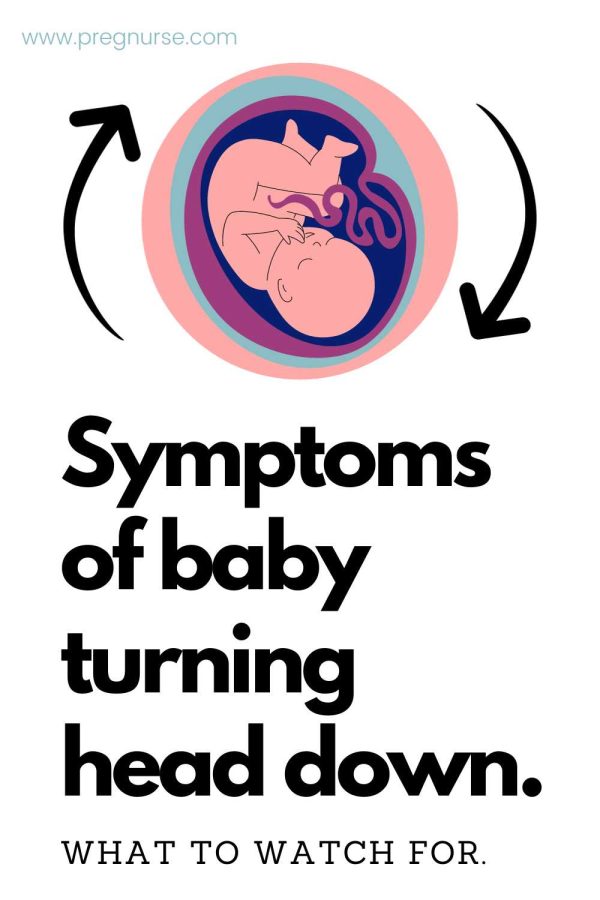
Are you in your third trimester? Grab my free checklist here:
What are the signs that baby has turned head down?
The biggest indicator is where you feel fetal movement. If you tend to feel kicks up more towards your rib cage and smaller movements (arms and hands) in the bottom half of your uterus, it is likely baby is in the head-down position.
Some people may able to feel the baby’s head engaged into their pelvis this is another potential sign of them being in the cephalic position. When providers feel for the baby’s position is called Leopold’s maneuvers, and while not 100% can be very accurate by a skilled practitioner.
As a note, this is a difficult job, even after 20 years of doing it I didn’t feel amazing at it, so I would leave that type of work to a professional who’s felt a LOT of babies.
Your doctor or midwife may also be able to use ultrasound imaging to tell if your baby is in the cephalic position (this is the best way — anything else can be confusing and sometimes we are wrong).
FYI, while I don’t recommend it I do have a whole post on at-home ultrasound machines. I also have a post on 32-week ultrasounds and what they’ll check for.
Furthermore, when performing a pelvic exam near the end of your pregnancy, your doctor may also be able to tell from the positioning of the baby’s head and body whether they are in the cephalic position or not (they will feel a hard head vs a softer bum).
I have a whole post on how to tell if baby is head down that you might find helpful.
Paying attention to all these signs may help you determine if your baby is in a head-down (cephalic) position and give you peace of mind as you prepare for childbirth.
If you have any questions at all about baby’s positioning once you’re into your third trimester, be sure to ask at your next prenatal appointment, so your provider can assess the position using their skills (and maybe an ultrasound if they have one handy). I have a whole post on baby’s position at 27 weeks.
Wanting to know more about baby in the womb — check out these posts:
- 3 Ways To Get Baby To Flip Head Down
- Can Excessive Coughing During Pregnancy Hurt The Baby?
- 3 Things To Do When Your Doctor Says You Have A Big Baby
- Once Baby Is Head Down Can They Turn Again?
What are the signs my baby may be in a bottom-down (breech) position?
If your baby may be in a bottom-down or breech position, there are some signs to look for.
Your healthcare provider can help you determine if your baby is in this position by feeling your abdomen and performing an ultrasound.
Some of the most common signs that your baby may be in a breech position include the presence of what feels like the baby’s head above your bellybutton, a head that can be felt very low down in the pelvis, and an irregular shape to your uterus.
Many people also complain about the very hard head bumping into their ribs and causing rib pain.
Other signs include feeling less movement on one side than the other as well as hearing fewer heart tones on one side than the other. If you suspect that your baby is in a breech position, it is important to let your healthcare provider know right away so they can take any necessary steps to ensure their safe delivery.
Experienced practitioners can often look at a belly, and just noticing it looks different can know that baby is breech. Also, where we assess the fetal heart rate can be different in a breech baby as well.
If I found the heart rate on your tummy above your belly button I’d often ask the doctor for an ultrasound to see if baby is breech. If there isn’t time for an ultrasound, a vaginal exam can often tell an experienced practitioner if baby is breech (because you’d feel buttock, not head when you check their cervix).
They’re called Leopold’s maneuvers:
It was really easy to sort of ignore baby’s position in the womb, but I quickly realized that there was a whole lot to think about this baby, how they’d get out and how I’d manage once they were born.
I sort of felt like I didn’t have control over any of it.
And then I realized the ONE thing I have control over, is how I prepare for all of it. Honestly, I took a birth class with my first that wasn’t all that helpful — but I am so glad that there is THIS class now.
Surprise, surprise, how we move during pregnancy can affect baby’s position, and there are things that we can do in labor that can put them into a good position as well (it’s not ALL just head-down stuff)– but sometimes you have to know how to ask for help to make those things happen.
This class was created (by an experienced labor nurse) for busy couples like yourself, to prepare you for:
- The rest of pregnancy (hello 3rd trimester testing)
- Labor (staying at home as long as possible is a key — and I’ll show you how)
- Birth (knowing what’s going to happen will nagging birth trauma later on)
- Postpartum (have you even thought about that? — get the best tips I have heard for it!)
What are the signs my baby may be in a transverse position?
A transverse position means that the baby is neither head or bottom down. They are laying across your abdomen with the head and bum on the sides of your uterus (although most often they aren’t directly across, usually one appendage is pointing down, more like a 45 degree angle).
It is more difficult to ascertain transverse lie baby symptoms — most often you’ll feel the symptoms of whichever side is “down” — and again, an ultrasound is the best way to tell how baby is positioned in the womb.
Most often “transverse lie” babies are easier to to do a version to put them in the right place — and we’ll talk more about those, so keep reading!
Here’s a few more symptoms in labor pregnancy that might interest you:
- 7 Things You’re Doing Wrong in Your Third Trimester
- 5 Mistakes People Make in Their Third Trimester
- Stomach is Hard In my Third Trimester — is that OK?
- How a Birth Class Changes Pregnancy, Labor, Birth & Life With Baby
- What is a Non-Stress Test (NST)? Why does it matter?
What about the other positions? LOA — ROA?
These positions refer to the way your baby is facing in the womb. LOA (left occiput anterior) and ROA (right occiput anterior) mean which side of the baby’s face is facing the top of your pelvis. They would be used for a cephalic (baby head is down) presentation. Most often they refer to LOA or LOA instead of talking about which side of the baby is posterior.
This is easy to get confused with two things that also talk about:
- Anterior placenta — means the placenta is on the front of your uterus (anterior position means front) rather than on the back closer to your spine
- Posterior cervix — means the cervix is further back in your birth canal
Neither of those things have anything to do with if baby is head up or head down.
Doing your kick counts later in pregnancy can make you more attune to how baby is moving and be more mindful of how movements are changing:
What about Footling or Frank Positioning?
There are 3 different types of breech presentation (although a transverse lie can also be considered a breech presentation, but we already covered that).
- Frank breech — when baby’s legs are straight up and near their head — baby’s bum is directly pointed out the vagina
- Complete breech — baby’s legs are folded up (so the thighs and calves are together — like the “Fetal position” normally is — but baby is bum first, instead of head first)
- Footling breech — baby’s feet are the first things next to the birth canal. Baby is sort of sitting on their feet cris-crossed.
All of these are breech presentations, and change what type of delivery you might be able to have and how easy it might be to do a version.
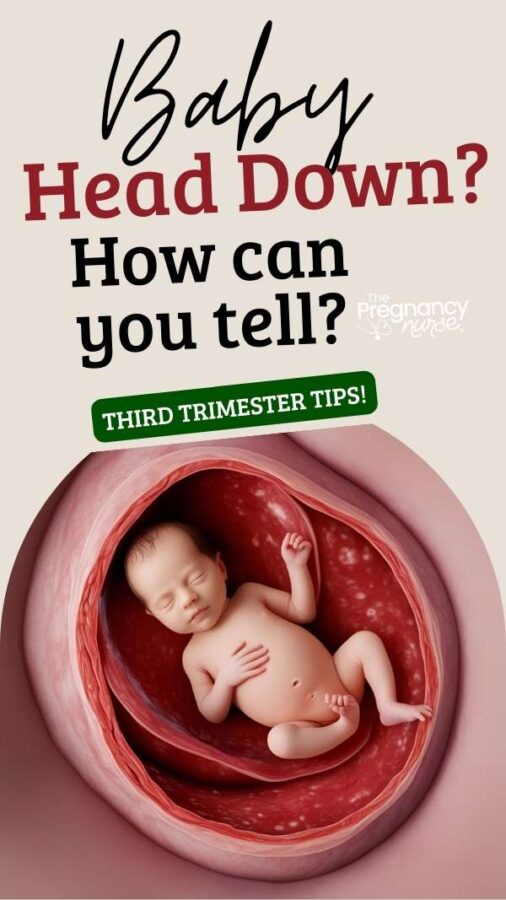
What does it feel like when your baby turns head down?
Obviously, it really depends on how far along you are and how big baby is. However, people that are well into their 3rd trimester say they feel like a “tidal wave” of baby movement happens and they “know” baby has switched.
As the uterus at that point doesn’t really accommodate baby to be perpendicular to the womb, it may shift slowly at first, but then normally moves quite quickly into the new position.
This can also be true if a baby switches from cephalic or breech though.
That being said, I have patients who have no idea that baby has changed position. It may have happened while they were sleeping, or perhaps they just didn’t have that “tidal-wave” experience — but, either way I have seen baby changing position without the mother knowing (even later in pregnancy).
It is also even possible (although very rare) for baby to change position during labor.
I love that you’re here — but is your PARTNER also getting prepared? If you’re interested in getting prepared together, check THIS out!
Is it painful when baby turns head down?
I haven’t heard patients say it is painful, just more of a big movement that they aren’t initiating. Again, all of that is when baby is closer to your due date. If you’re earlier on you likely won’t notice anything when baby turns head down.
Baby can engage more into your pelvis when they are head down, so some people feel some cervical or clitoral pressure in that instance. But, that’s more due to the engagement rather than just the head being down.
I have a whole post on what I recommend if baby isn’t head down.
While you’re here — don’t miss getting prepared for AFTER baby is here:
How often will my baby’s position change?
Early in pregnancy (first and second trimesters) baby may change position frequently. They have lots of room and as they grow and stretch they will float and move throughout the uterus.
As you progress into your third trimester baby usually picks a spot as the womb begins to tighten into them. However, I have still seen babies who switch position frequently, so it is still possible for babies to turn well into your pregnancy.
When should baby be head down?
I have a whole post about when baby will turn head down — but the cliff notes is that most babies will be head down by around 32-36 weeks of pregnancy. If you are prior to that point, there is no need to worry about baby being breech still.
Many people see that baby is breech at their 20 weeks ultrasound and initiate a lot of worry around that, but baby may change position several times after that — no need to worry!
Remember, that constant worry (vs small stressful events in life) isn’t good for you or the baby, so try to decrease your anxiety!
What if my baby is breech towards my due date?
If the baby remains breech (meaning their head is up and either the bum or the legs are positioned to come out first) after 36 weeks, there are techniques available such as external cephalic version (ECV) which can help turn the baby so that they are head down before labor begins.
If this does not work, then your doctor may recommend a Cesarean section which will help ensure both mom and baby remain safe and healthy during delivery.
In the US most doctor’s medical malpractice insurance cautions them on doing a breech vaginal delivery. I have only seen them in very few small circumstances in the hospital, and your provider will likely recommend a cesarean birth if your baby remains breech.
It’s important to talk with your provider to make the best choice for YOU in those circumstances (but be aware that many doctors really just aren’t trained, or good, at delivering breech — so it may not be your best choice even if you think it is safe):
Will I need a c-section if my baby is breech?
Most likely, yes. Most doctor’s medical malpractice insurance cautions them on doing a breech vaginal delivery. I have only seen them in very few small circumstances in the hospital, and your provider will likely recommend a cesarean birth if your baby remains breech.
I know this can seem super scary, but I love what Rachel had to share on this podcast episode (listen right here) — her baby was breech and she needed a cesarean, and ended-up being really happy with it!
And getting prepared for a c-section is smart for any expecting parent, you never know how your delivery will turn-out! That’s why you need a birth class from someone experienced with them too!
What can I do to help my baby to turn?
I have a few tips if your baby is breech (I also have a whole post on how to get baby to flip).
Go see a chiropractor. I’ve actually seen the most luck from this. While I wish I’d seen a chiropractor for all of my pregnancies, if I was past 32 weeks and my baby was breech I would definitely find a chiropractor trained in the Webster Technique (very important to find one trained in that vs a regular chiropractor).
They manipulate your pelvis to help baby find their best way out. Ask your provider if they know of one to start (if not, just head to the internet to start searching for one in your area with good reviews).
I have a podcast episode with a chiropractor that explained it super well!
Try Spinning Babies: While waiting for that chiropractor appointment, I would try the techniques in spinning babies. It may be the key to get some baby moves.
Ask for a Version: Ask your provider to do a version. As long as baby is growing well and you and baby are healthy most often they will do this for you. We’ll talk more about those in the next section.
Resign myself to mother nature: If your baby has been in one position for a long time, there is a good chance there is a reason they are that way. Be it your pelvis, your uterus, the placenta, the cord or something…. mother nature has that baby breech for a reason, and a cesarean section may be your best way to deliver.
Remember that cesarean sections, while major surgery, are one of the most frequently-done surgeries in the hospital had have a high success rate. And we have a whole chapter about them in here (any birth class you take should have information on cesarean sections).
What is a Version?
In the version they will use their hands and forearms to try to push baby into the right position.
If you are a good candidate, I’d ask them their success rate with versions because as an assistant to many versions I’ve seen some doctors not very good at versions. If you go to a large practice, feel free to ask for the provider that is the best at versions.
Are versions painful?
I think most people describe them as a LOT of pressure. As you can imagine, that doesn’t feel great. They do give you anti-contraction medications (called tocolytics) to help your uterus relax for the procedure.
There is a study that proves that having anesthesia (like an epidural) for the version can increase the success rate. Some doctors seem hesitant to have an epidural on board because the patient won’t be able to say if they feel their uterus tearing, but with proper monitoring, it seems like that isn’t as much of an issue.
Most often they also have an ultrasound on baby at the same time too (to be sure of how baby’s positioned), and an RN is there to try to get fetal monitoring as much as possible.
Sometimes people are induced right after a version, and sometimes they let you go home to let baby “settle in” first — seems to be doctor’s preference.
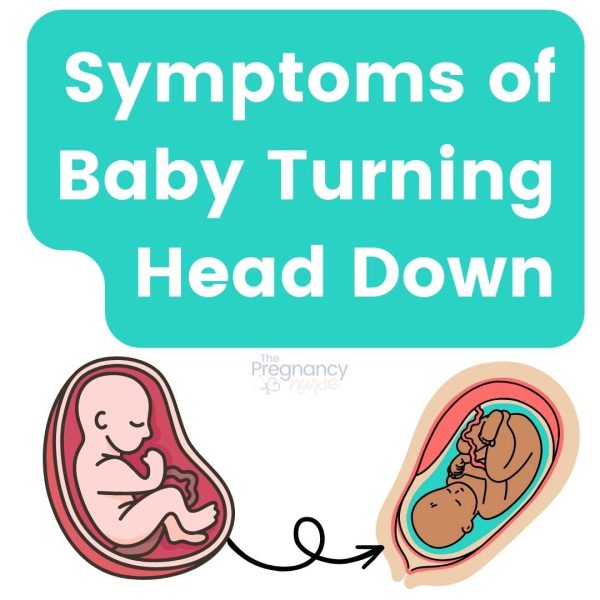
How long after baby turns head down does labor start?
Baby’s position isn’t normally one of the signs of labor. Some babies are head down the entire pregnancy, so that obviously wouldn’t want to start labor. I do have a whole page on the signs of labor though.
What happens if I go into labor and baby is breech?
If you start to have contractions and baby is breech they will either stop the contractions if you’re before 35’ish weeks, or you will need a caesarean section. They really don’t perform breech vaginal births routinely in the hospital at this point. Most providers believe that breech isn’t an OK position for birth vaginally.
While your provider will feel to see how baby is positioned, if there is any question they need to do an ultrasound to check to see if baby is still breech.
They do not do versions on people who are currently contracting, so that won’t be an option at that point.
Ok, that’s baby head down. I hope you found this information pretty simple to understand and helped you feel more calm about the progress of your pregnancy. Come join me in The Online Prenatal Class for Couples — the simple way to get prepared for your birth.
I love what Elsie had to say:
“My husband and I really enjoyed watching these classes! Hilary was enjoyable to learn from and we felt much more prepared going into our labor/delivery and postpartum experience. I would highly recommend buying her class!”
Read all the reviews here
Want more info — I also have a video on this same topic:


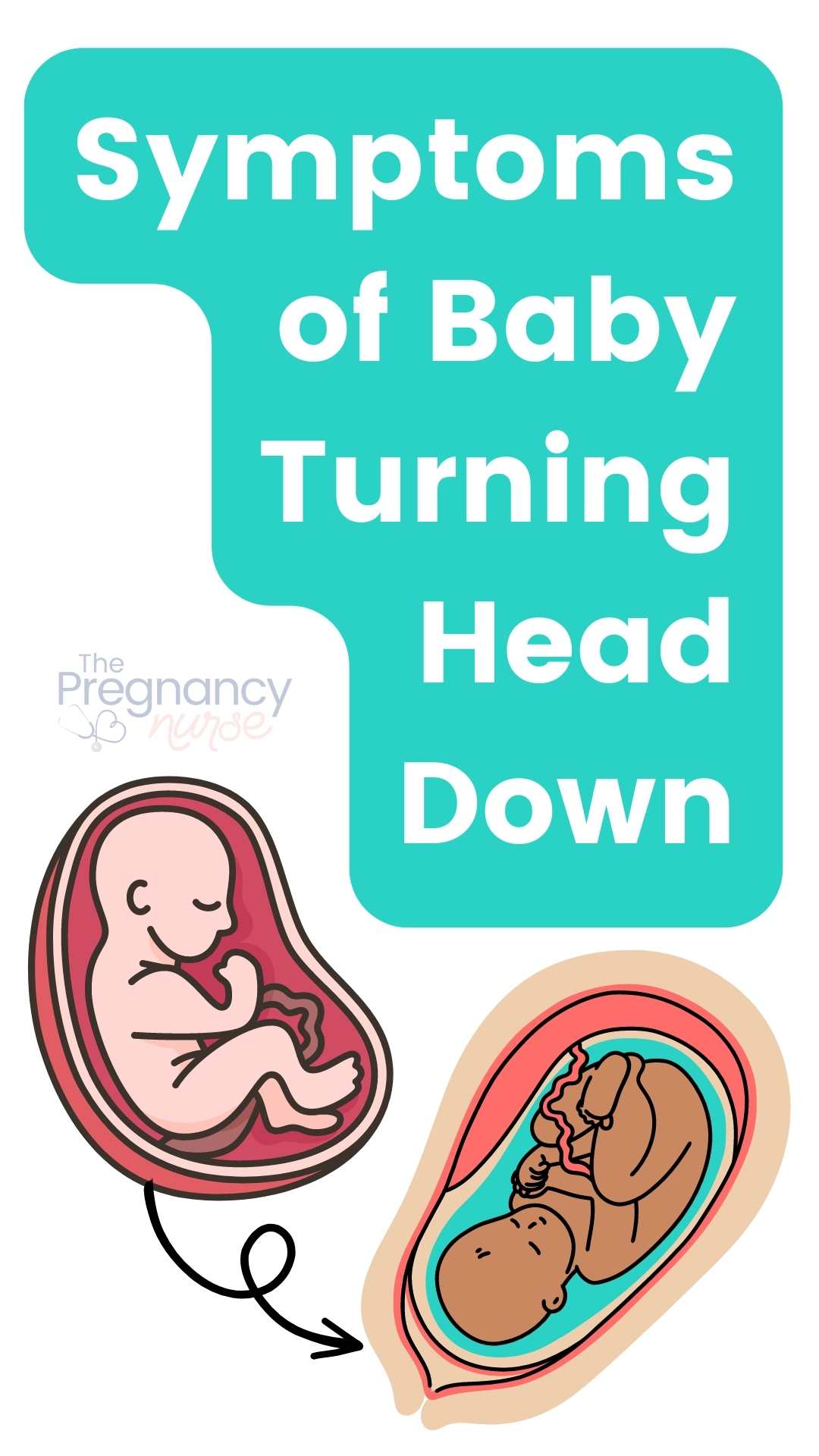
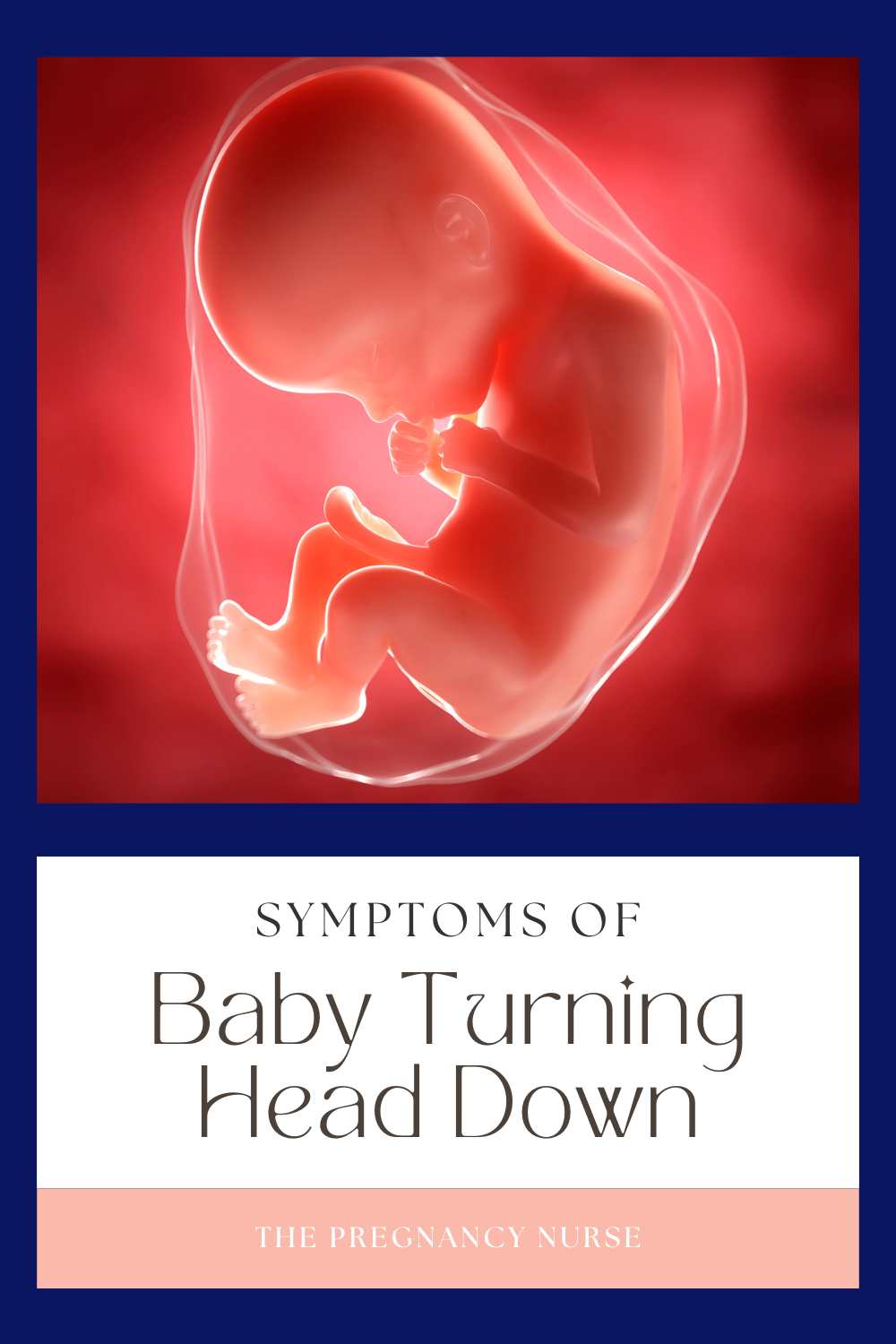
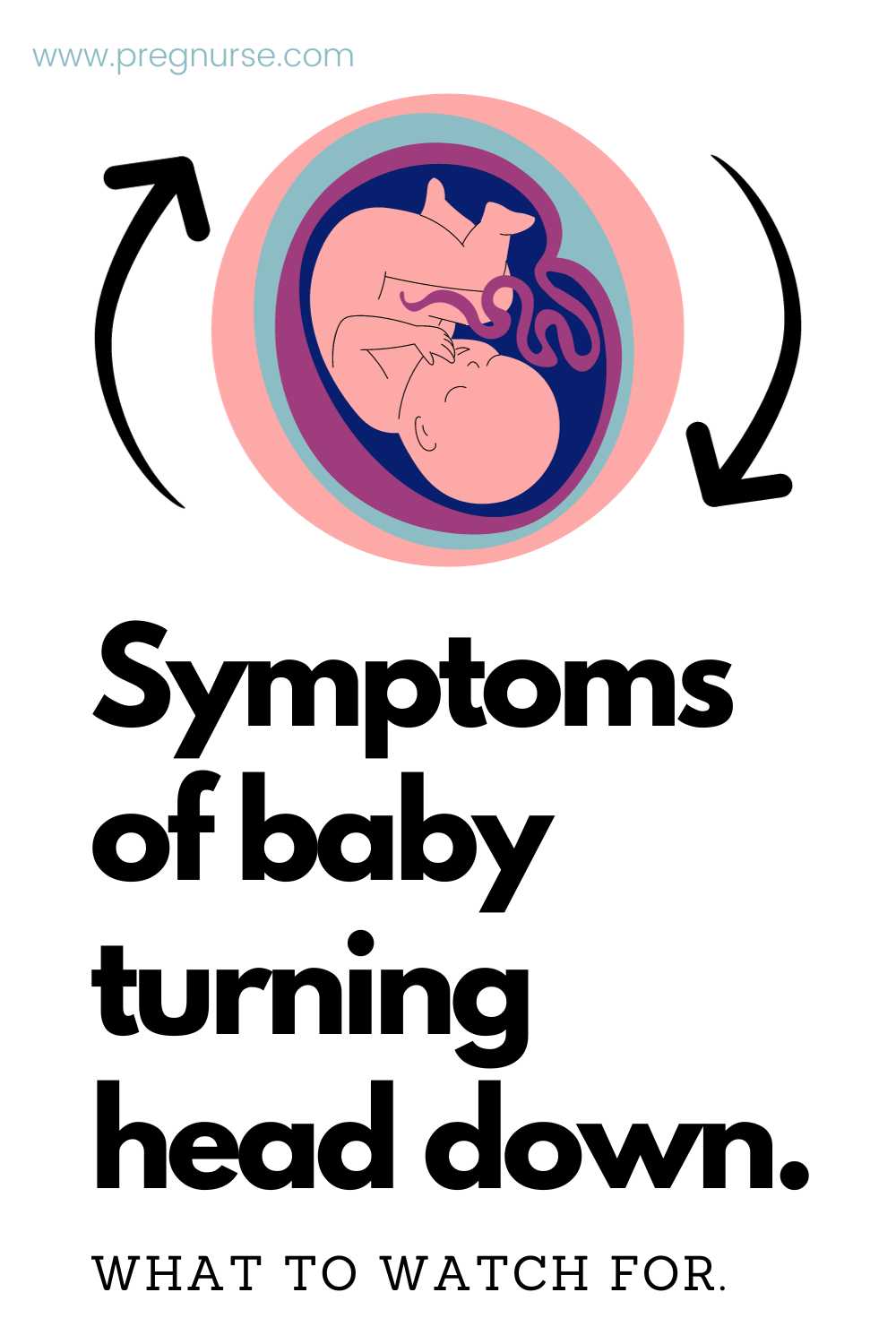


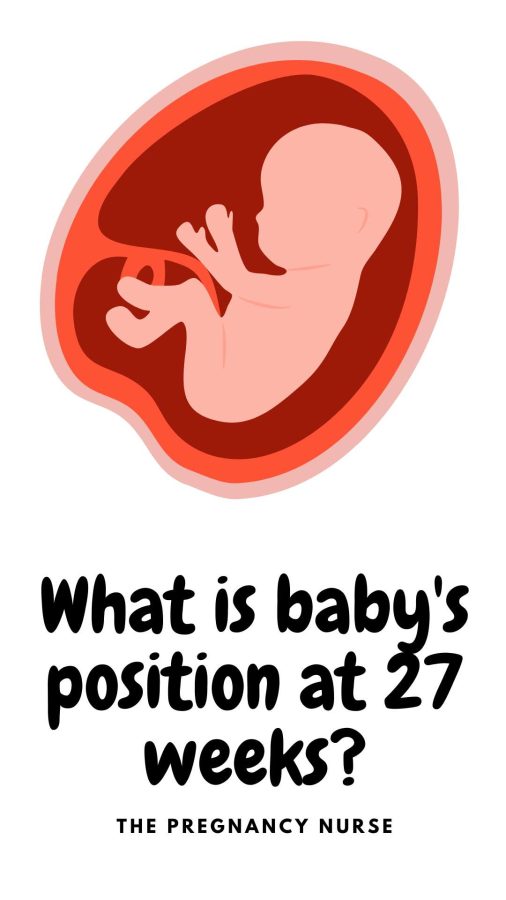



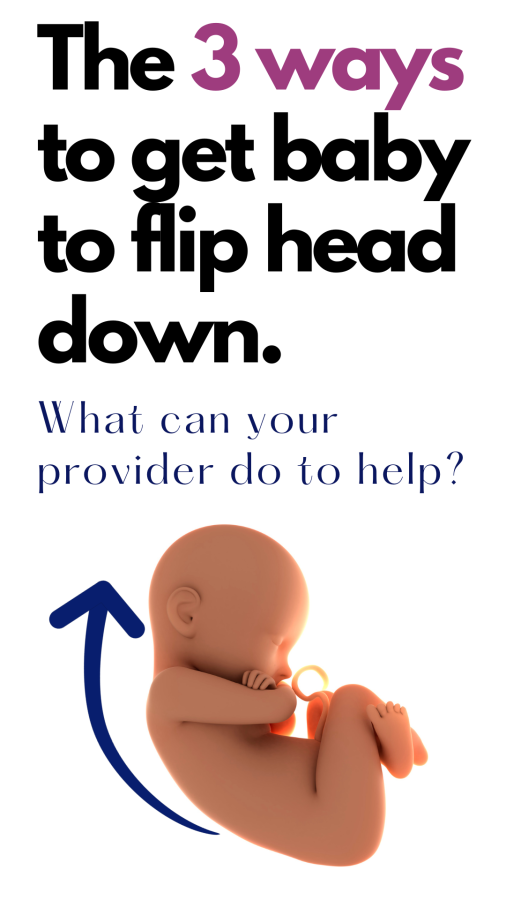

 How Long Can You Stay 1 cm Dilated?
How Long Can You Stay 1 cm Dilated?
